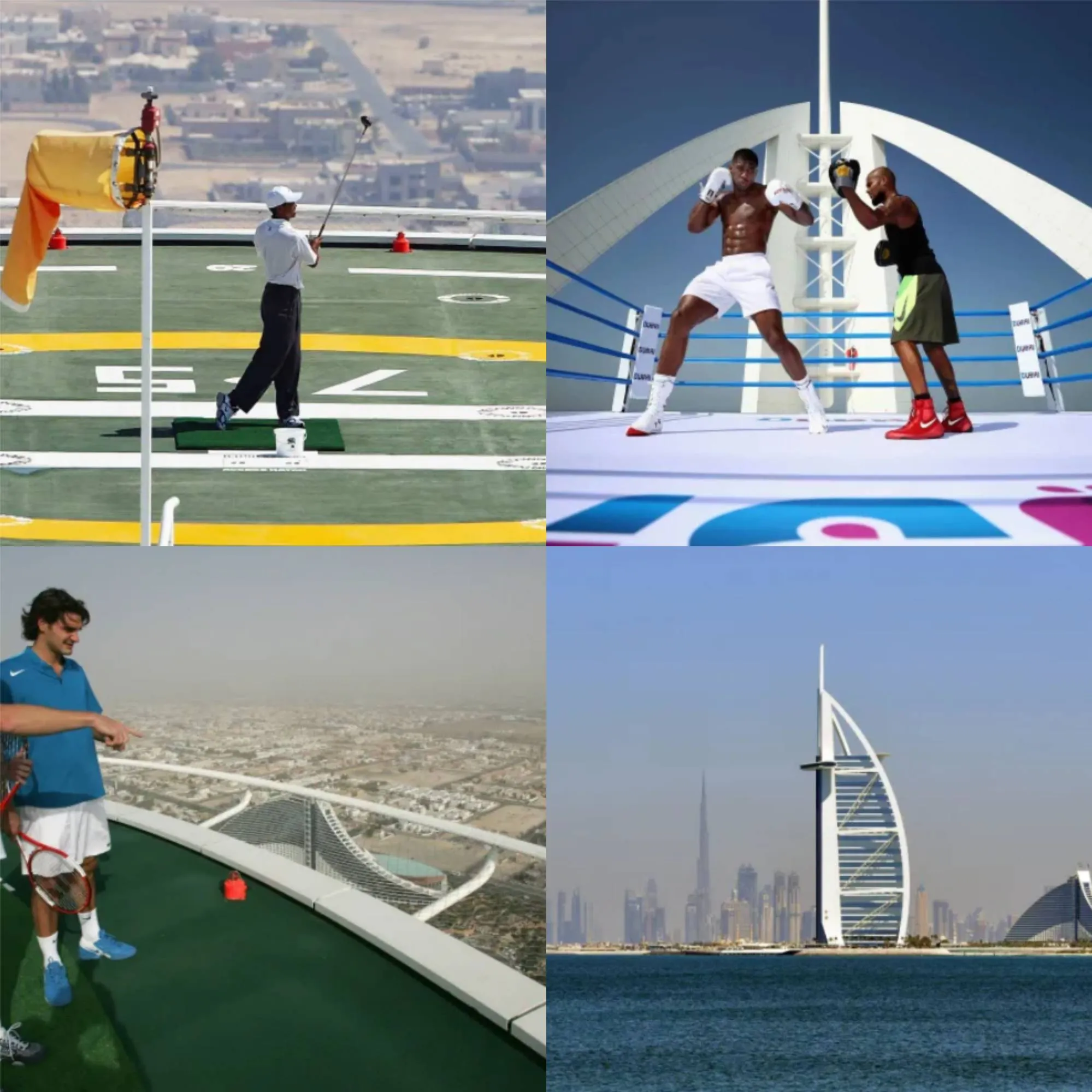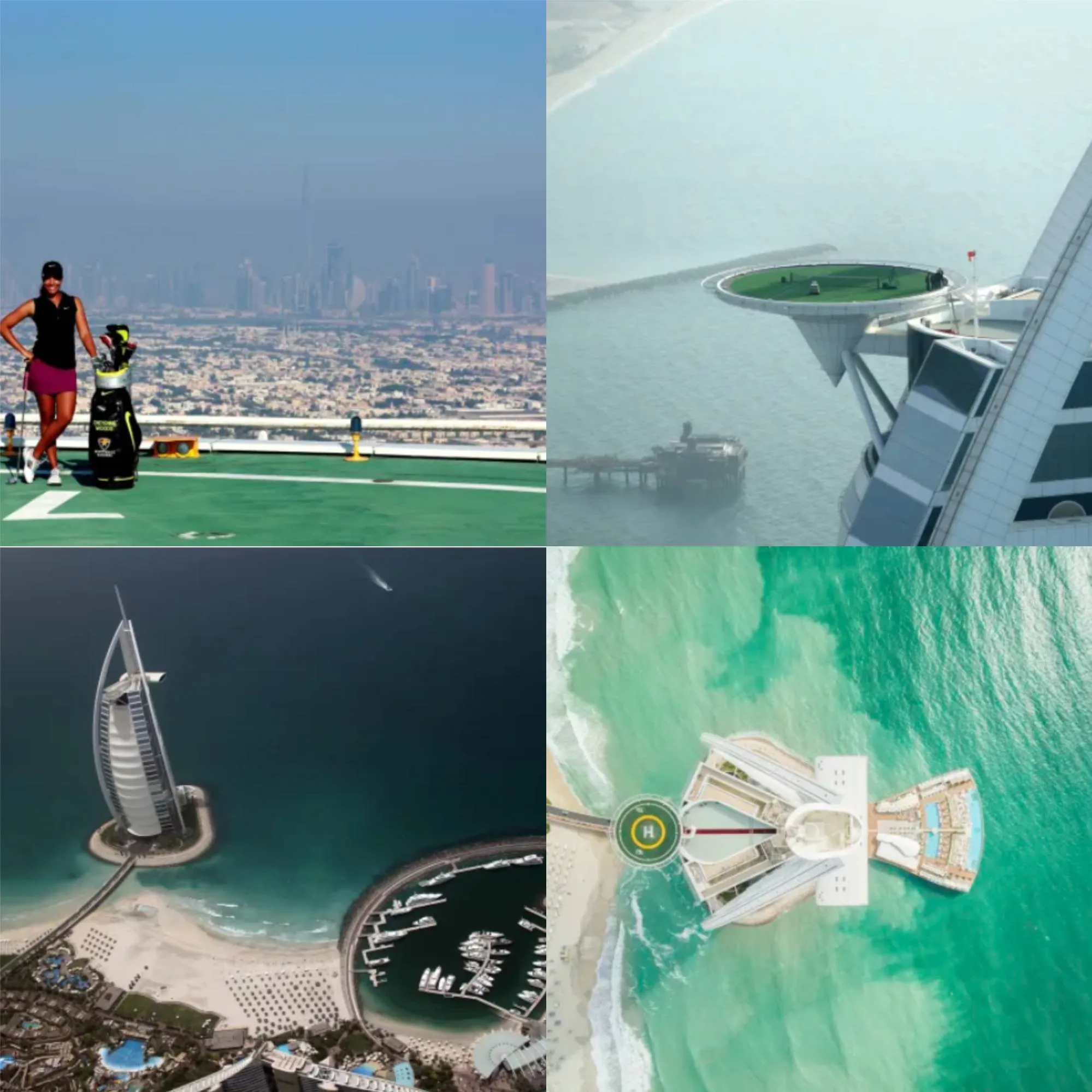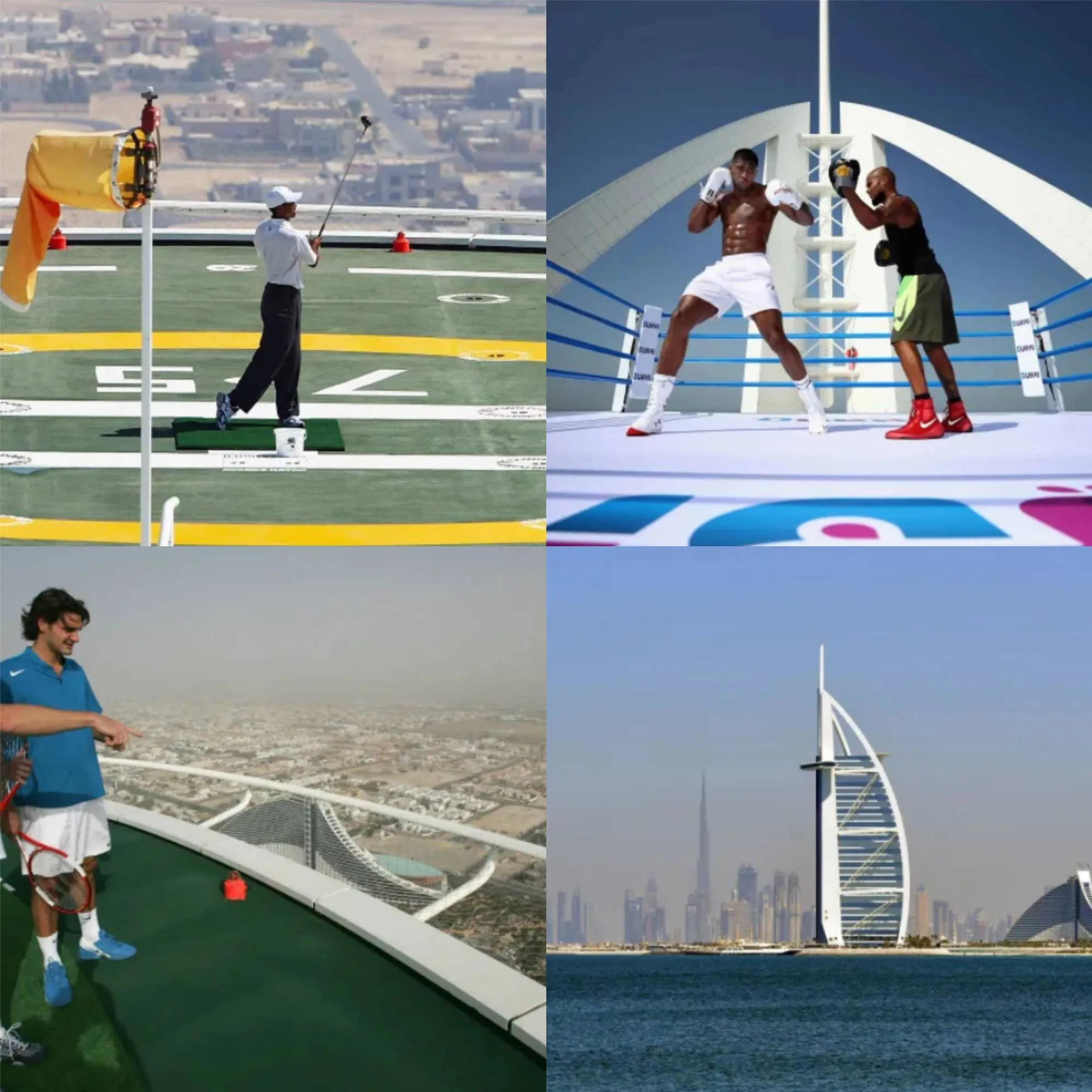
Burj al Arab’s Iconic Helipad Celebrates 25 Years of Luxury and Stunts

Dubai in 1993 was a far cry from the glamorous global hub it is today. The city’s financial and construction sectors were still in their infancy, and it had yet to establish itself as a playground for the elite. At that time, the tallest building in Dubai was the World Trade Center, a modest 149 meters tall.
British architecture firm Atkins Global was approached by Dubai’s ruler with a grand vision: design a building that would make the UAE recognizable worldwide. Simon Crispe, then Atkins’ managing director in the Middle East, was tasked with creating a landmark as iconic for the UAE as the Sydney Opera House is for Australia or the Eiffel Tower for France.
Over the next seven years, a team of international architects worked in secrecy to bring this vision to life, resulting in the Burj al Arab, a 321-meter-tall marvel that opened in 1999. This man-made island and its distinctive sail-shaped silhouette quickly became synonymous with opulence and exclusivity, attracting the world’s elite with its luxurious suites and rare marine life exhibits.
One of the Burj al Arab’s most famous features, however, is its helipad, which has become a symbol of the hotel’s grandeur. Suspended 212 meters above sea level, the helipad extends precariously from the building’s sail shape. It was designed with both structural integrity and visual impact in mind, supported by minimal visible steelwork. The 27-meter-wide helipad can support up to 7.5 tons.
The helipad primarily serves as part of the hotel’s high-end concierge service, offering guests the choice of a Rolls Royce airport pickup or a helicopter transfer. This aerial option is popular, with numerous helicopter arrivals and departures each month.

Beyond its practical use, the helipad has become renowned for its extraordinary stunts. In 2005, tennis legends Roger Federer and Andre Agassi played an exhibition match on a court set up specifically for the occasion, filmed by helicopter. Federer returned in 2012 for another match, this time against Novak Djokovic. The helipad was also transformed into a golf course for Tiger Woods and Rory McIlroy to tee off over the Persian Gulf.
In 2017, British boxer Anthony Joshua sparred in a specially constructed ring on the helipad. The most audacious stunt occurred in 2013 when Formula 1 driver David Coulthard performed doughnuts in a racing car on the helipad, a feat that required meticulous planning by Atkins engineers to ensure safety.
The helipad has hosted a variety of record-breaking feats, from a kiteboarding jump to a BMX stunt from a helicopter and even skydiving events. In 2023, Polish pilot Lukasz Czepiela made history by landing a plane on the helipad, a testament to its role as a stage for daring achievements.
While the helipad’s stunts have cemented its fame, it also serves as a luxurious venue for private events. Since 2014, it has been available for weddings and exclusive parties, with ceremonies starting at $55,000 and some reportedly costing millions. These events, which often feature personalized touches like painted messages for special occasions, highlight the Burj al Arab’s commitment to spectacle and grandeur.
The Burj al Arab was conceived to place Dubai and the UAE firmly on the global map. Twenty-five years after its inauguration, it has achieved that goal and continues to shine, with its world-famous helipad playing a central role in its storied legacy.



